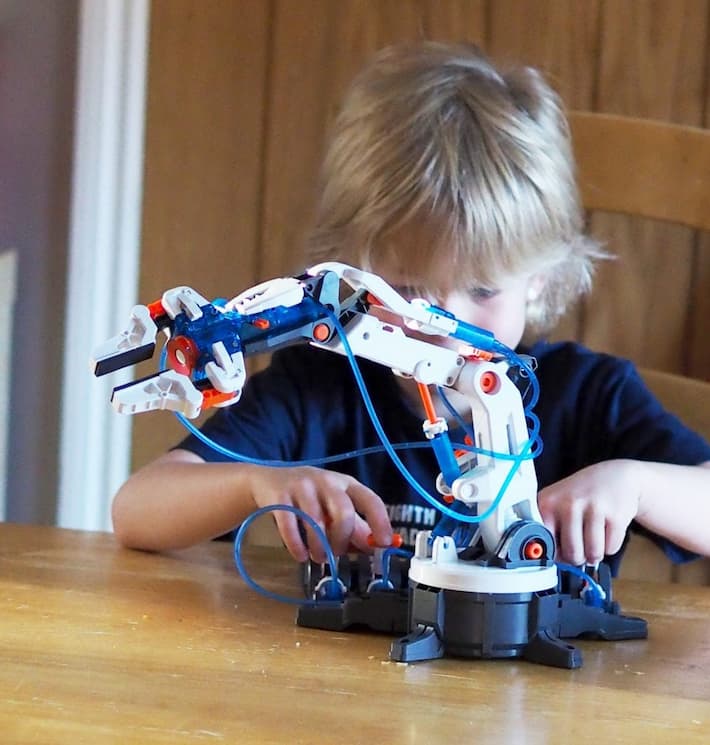What sets robotic toys apart from regular ones is the unique blend of fun and learning they provide. They engage kids with interactive, hands-on experiences that promote STEM (science, technology, engineering, and math) skills from an early age. They also encourage curiosity, problem-solving and creativity as children build, program and control their toys in real time.
This adaptability makes them not just entertaining but also educational tools that support cognitive development and critical thinking. So, if you’re about to introduce your child to the realm of these high-tech toys, the following guidelines break down everything you need to know, including some of the best models on the market.
Models that Shine

Amaze and educate your kids at the same time with next-level, age-appropriate toys robotic designs. Nowadays, there is a wide range of options available, however not all of them are quality ones and serve the purpose. These are the models to lay your hands on every time you look for a solid high-tech alternative.
Tobbie the Robot
This interactive robotics toy with six legs reacts to its surroundings through two programmed modes—object following and avoidance—creating a dynamic and engaging play experience. Featuring LED lights and integrated sound effects, Tobbie piques the curiosity of children aged 8 and older, serving as a fun introduction to the world of robotics.
Its bilingual interface supports both English and French, enhancing its accessibility. Its sturdy design and lively features make it a highly sought-after STEM toy that promotes learning through exploration.
Space Robot 3‑in‑1 – Creator
As part of the LEGO Creator series, this 281-piece set designed for ages 8 and up can be transformed into three different models: a space robot, a space dog, or a space rocket. What makes these robotics toys the perfect combination of engineering and creative play is their main build, movable tracks, a rotating torso, articulated arms and fingers, along with a glowing chest reactor. Aside from their next-level construction, children can change their builds when they’re ready for new interstellar adventures, which helps improve problem-solving skills and spatial awareness through redesigning models.
Wabo the Robot
This toys robotic STEM kit featuring a gyro monorail from CIC provides an engaging engineering experience for kids. They can construct one of three Wabo models and design intricate monorail tracks with 26 different layouts, including crossovers, splitters and toggles. The Wabo operates using a single-wheel gyroscope effect, showcasing the principles of physics in action.
It comes with a bilingual manual in French and English, promoting language accessibility, with only two AA batteries. Comprising 186 pieces, this kit suits children aged 8 and older, fostering hands-on creativity, understanding of engineering concepts and iterative design skills.
What to Look for: Important Buying Factors

Besides being familiar with some of the most popular toys robotic options, there are some additional factors to keep in mind when shopping. These will help you locate a good toy even when they are not the above-mentioned alternatives in question.
Age Appropriateness
Always verify the suggested age range. The robotic toys designed for younger kids typically emphasize basic interactions, lights, and sounds, whereas older children might prefer more intricate kits that involve coding, building, or remote operations. Age-appropriate features guarantee that the toy is safe and engaging.
Educational Value
One of the biggest advantages of these toys is their potential to impart STEM skills. Seek out educational toys that encourage coding, logical thinking, problem-solving and engineering principles. Many of these come with beginner programming interfaces (like drag-and-drop coding) that adapt as the child advances in learning.
Interactivity and Features
More interactive toys tend to be more captivating. Features such as voice recognition, sensors, motion detection, or app integration can enhance the play experience. Opt for a robotic toy that provides numerous functions, like movement, speech, or tactile responses, for sustained interest.
Build Quality and Safety
Toys with robotics should be durable and constructed from non-toxic, child-safe materials. Look for products that adhere to safety standards and can endure frequent use. A strong build not only guarantees longevity but also improves the toy’s performance over time.
Expandability and Customization
Certain designs of these toys allow for upgrades or expansion kits, which are ideal for maintaining interest levels and fostering deeper learning. If you’re purchasing for an inquisitive mind, pick a toy that accommodates add-ons or custom programming for prolonged play and educational development.
Power Source and Battery Life
Examine how the toy is powered. Rechargeable batteries are often more convenient and economical in the long run. Battery life is crucial, particularly for toys with numerous features like motion, lights, or sound. A brief runtime can quickly lead to frustration for kids during playtime.
Ease of Use and Setup
Reflect on how simple it is to assemble, connect and operate the toy. Clear instructions, intuitive controls and beginner-friendly apps can significantly enhance the experience, especially for parents and kids who are new to robotics.



